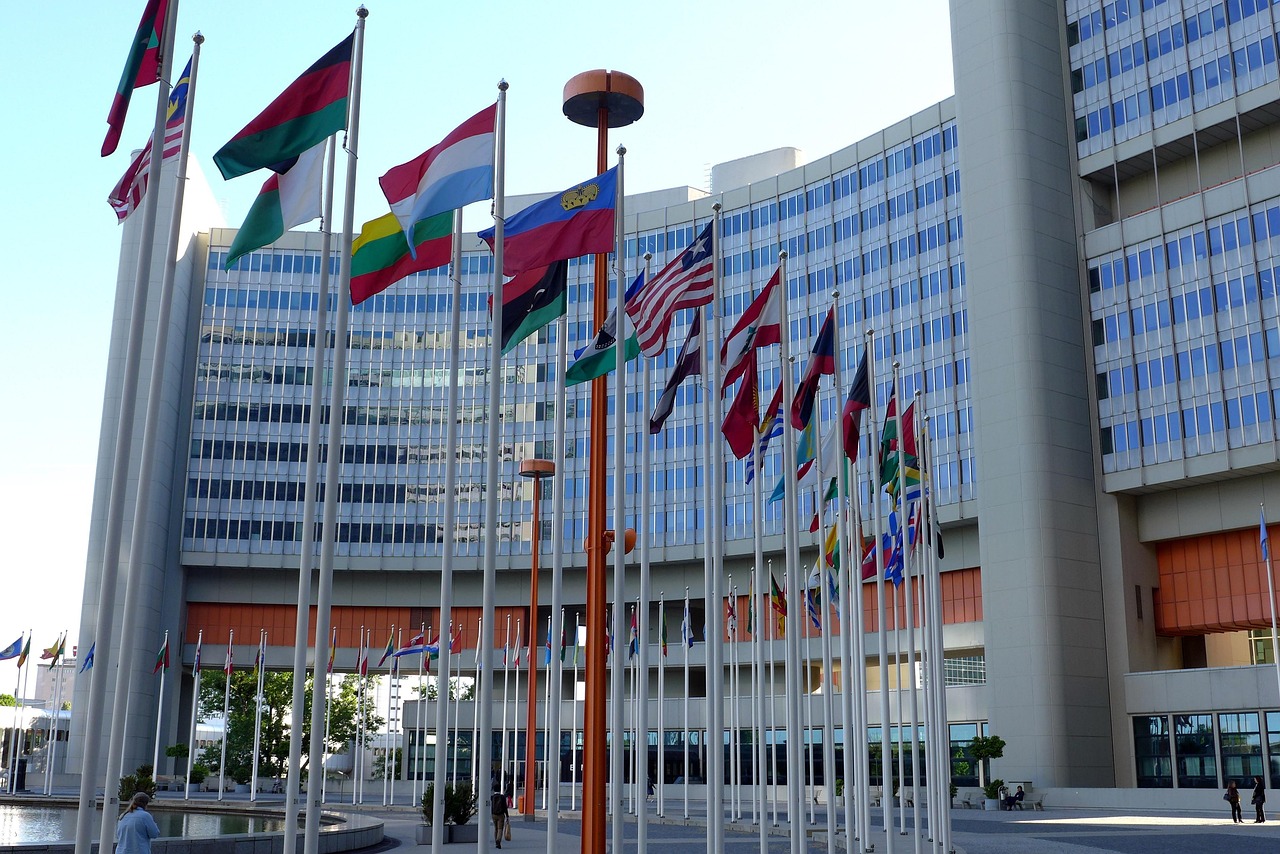The exposure of U.S. diplomats, both stateside and abroad, to recruitment, SIGINT/COMINT targeting, and the loss or compromise of portable computing devices (PCDs) is not accidental. It is a cumulative effect of structural neglect, cultural underinvestment, and the evolving threat environment. Three converging dynamics have produced this vulnerability: institutional bifurcation between diplomatic and intelligence missions; budgetary and educational neglect of counterintelligence (CI) training for non-intelligence personnel; and the rapid digital transformation of diplomatic operations without commensurate adaptation of tradecraft.
Institutional bifurcation is the result of the long-standing separation between the U.S. Foreign Service and the intelligence and security community. Diplomatic officers have historically focused on political, economic, consular, and public diplomacy missions, while security concerns were delegated to Diplomatic Security (DSS) or local host-nation security services. Counterintelligence responsibilities were largely retained within the FBI, CIA, and military intelligence organizations, creating operational silos. This division left diplomats outside the formal CI ecosystem, meaning they rarely received advanced training or actionable threat intelligence. As a result, many Foreign Service Officers (FSOs) still approach their duties as political envoys rather than as personnel operating within an adversarial intelligence battlespace.
Budgetary and educational neglect compound this problem. For decades, the Department of State has allocated limited funding for counterintelligence instruction. Beyond basic “insider threat” briefings or annual cybersecurity refreshers, diplomats often receive little exposure to advanced CI concepts or adversary recruitment methodologies. As reported by ClearanceJobs (McNeil, 2025), many diplomatic personnel deploy to high-threat assignments with minimal training in recognizing or resisting foreign intelligence approaches. The lack of sustained CI education and awareness initiatives at the Foreign Service Institute (FSI) has produced an environment where diplomats are ill-equipped to recognize subtle recruitment tactics or electronic targeting.
The digitalization of diplomacy is a serious vulnerability. Over the past two decades, U.S. embassies and consulates have become highly dependent on portable computing, mobile devices, remote communications, and cloud-based data exchange. While these tools increase efficiency, they have also expanded the attack surface for adversaries. Foreign intelligence services (FIS) now target diplomats as entry points into the U.S. government’s global communications infrastructure. These adversaries exploit unsecured networks, intercept wireless signals, implant malware on devices, and even conduct theft of laptops and external drives. As technology has evolved, diplomatic tradecraft has failed to keep pace. The convenience of connectivity has outstripped the discipline of security.
This weakness is illustrated by several notable cases of espionage and digital compromise involving U.S. diplomatic personnel. The case of Steven John Lalas, a U.S. State Department communications officer stationed in Athens during the early 1990s, is instructive. Lalas provided classified diplomatic and military documents to Greek intelligence over several years before being caught and sentenced to 14 years in prison (Wikipedia, n.d.). He exploited his communications role to access classified cables and Defense Department assessments, which he illicitly removed and passed to a foreign government. Lalas’s case demonstrates that diplomats and communications officers, though not traditional intelligence operators, are prime recruitment targets because of their privileged access to sensitive material. His actions exposed structural vulnerabilities in both vetting and insider threat detection within the State Department’s overseas missions.
The Walter Kendall Myers betrayal is another. They spied for Cuba over nearly three decades. Myers, a senior State Department official and FSI instructor, used his position to obtain and share classified information with the Cuban Intelligence Directorate (Wikipedia, n.d.). The Myers case was not about hacking or physical theft but rather ideological recruitment and sustained insider espionage. Myers was approached gradually, courted ideologically, and ultimately compromised. This illustrates that diplomats whose careers often involve long foreign postings, personal networks abroad, and cultural immersion are highly susceptible to long-term cultivation by FIS recruiters. The absence of continuous CI vetting or behavioral monitoring allowed this penetration to persist for decades.
A third example identifies the theft and exploitation of portable computing devices. The FBI’s “Operation Ghost Stories,” which dismantled a Russian “illegals” network in 2010, revealed how laptops and wireless devices were central to espionage operations (FBI, n.d.). One seized laptop was used to establish covert wireless communications between Russian agents and their handlers. Similarly, numerous reported attempts have been made by foreign actors to steal or implant malware on the personal computers of Western diplomats. These incidents highlight that PCDs are not simply administrative tools but intelligence assets. When lost, stolen, or compromised, they can reveal network structures, contacts, and classified reporting, making them a modern equivalent of the “diplomatic pouch.” The War on the Rocks (2025) analysis of Russian espionage tactics confirms that FIS now combine human recruitment, cyber intrusion, and physical theft in hybrid collection campaigns against Western diplomatic targets.
The convergence of these human and technical vulnerabilities demands a fundamental modernization of CI training for diplomats. Primarily, diplomats MUST be required to receive foundational counterintelligence education. This training should move beyond theoretical awareness and immerse personnel in adversary recruitment tradecraft, SIGINT and COMINT methodologies, and recent case studies. Red-team simulations should require participants to role-play both target and recruiter to internalize how adversaries identify, approach, and manipulate their victims. A diplomat who can think like an adversary is far more likely to resist one.
Equally important, counter-recruitment instruction should emphasize behavioral recognition. Diplomats must learn to identify “soft pitch” recruitment methods, i.e., academic or journalistic overtures, social invitations, social media engagement, or mutual professional interests that can evolve into intelligence targeting. Diplomats must be taught how to perceive, disengage (politely, to preserve the possibility of a double operation), document, and report these encounters through secure channels without fear of reprisal. Continuous CI liaison support at missions abroad would reinforce these practices and ensure rapid response when suspicious approaches occur.
Secure digital and communications hygiene curriculum must be significantly expanded. Every diplomat should be trained in hardware hardening (full-disk encryption, TPM binding, BIOS passwording), media control (banning unvetted USB devices), secure networking (VPNs with endpoint authentication, regular rekeying), and immediate reporting of anomalies (device overheating, unauthorized processes, or loss). Training should include hands-on exercises where diplomats detect and mitigate simulated phishing or device compromise attempts. Embassies should maintain secure drop boxes and Faraday enclosures for potentially compromised devices until forensically examined.
Diplomats must be educated in SIGINT and COMINT awareness. This includes understanding how their electronic emissions can betray movements or discussions, recognizing signs of interception, and maintaining operational discipline in communications. Routine practices such as using shielded rooms for sensitive discussions, approved VPN use, disabling wireless and Bluetooth in secure areas, and maintaining strict clean-desk policies must become ingrained habits. Discipline transforms CI awareness from abstract instruction into practical daily behavior!
Counterintelligence training should incorporate recurring red-team exercises and after-action debriefs. Annual or semi-annual drills simulating recruitment, device loss, or cyber intrusion should be mandatory for all missions. These exercises not only test individual readiness but reveal systemic vulnerabilities such as inconsistent incident reporting or inadequate technical countermeasures. Lessons learned should feed back into State Department CI doctrine.
Structural and organizational reforms are equally important. The Department of State should embed a permanent counterintelligence officer or liaison from the FBI or CIA within every high-risk embassy. This officer would coordinate with the Regional Security Officer (RSO) and oversee local threat assessments, device inspections, and behavioral analysis. Additionally, all diplomats deploying to critical posts should achieve baseline CI certification, validated by written and practical exams similar to those required for intelligence personnel. This “best practices” certification should be renewed periodically and linked to promotion eligibility, reinforcing accountability.
Embassies should also implement periodic red-team audits, with technical and human testing designed to measure CI compliance and readiness. Device procurement and turnover policies must ensure secure supply chains, with forensic validation of new equipment and timely retirement of old hardware. The integration of artificial intelligence-based monitoring could further assist in detecting anomalies or exfiltration attempts across the diplomatic network.
The culture of self-reporting must be reformed. Diplomats often hesitate to report suspicious incidents for fear of professional repercussions. A no-fault reporting model paired with protective anonymity and positive reinforcement will encourage early detection of targeting attempts. CI professionals know that “near-miss” reporting is a critical tool. Diplomats and their staff members must internalize the same principle.
The exposure of U.S. diplomats to recruitment, signals interception, and device compromise is thus not merely a technical vulnerability. It is a clear cultural and institutional weakness. The cases of Lalas and Myers show that ideological or opportunistic recruitment remains a persistent threat, while modern espionage operations like those exposed in Operation Ghost Stories demonstrate that digital compromise is now equally dangerous. A robust counterintelligence program for diplomats must cultivate a mindset of constant adversarial awareness, blending human and technical security disciplines into the fabric of diplomacy itself. By embedding CI at every level of diplomatic training and operations, the United States can begin to close one of its most consequential vulnerabilities in the global intelligence contest AND contribute in a meaningful way to both defensive and offensive counterintelligence operations.
References
FBI. (n.d.). Laptop from Operation Ghost Stories. Retrieved from https://www.fbi.gov/history/artifacts/laptop-from-operation-ghost-stories
McNeil, S. (2025, October 9). Modernizing CI training for diplomats: New legislation aims to sharpen the shield abroad. ClearanceJobs. Retrieved from https://news.clearancejobs.com/2025/10/09/modernizing-ci-training-for-diplomats-new-legislation-aims-to-sharpen-the-shield-abroad-2/
War on the Rocks. (2025, April 8). Putin’s spies for hire: What the U.K.’s biggest espionage trial revealed about Kremlin tactics in wartime Europe. Retrieved from https://warontherocks.com/2025/04/putins-spies-for-hire-what-the-u-k-s-biggest-espionage-trial-revealed-about-kremlin-tactics-in-wartime-europe/
Wikipedia contributors. (n.d.). Kendall Myers. In Wikipedia. Retrieved from https://en.wikipedia.org/wiki/Kendall_Myers
Wikipedia contributors. (n.d.). Steven John Lalas. In Wikipedia. Retrieved from https://en.wikipedia.org/wiki/Steven_John_Lalas




